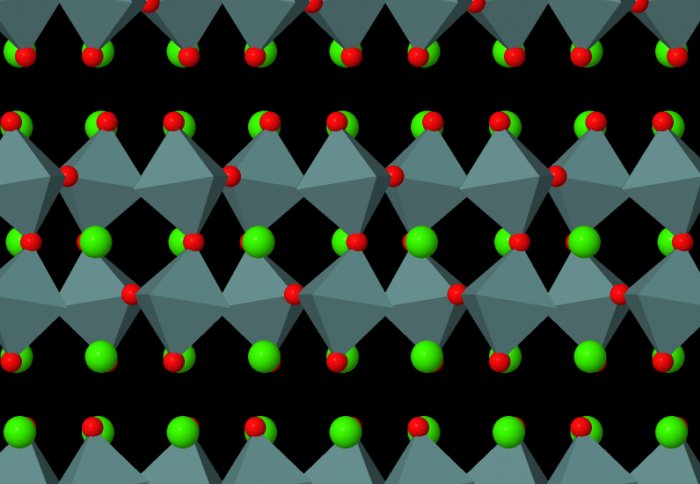
Crystal structure of the material

Researchers have discovered a material that could compensate for the damaging expansion that takes place when electronic components are heated.
Most materials expand when heated, but a few rare materials do the opposite and contract. The contraction usually occurs only over a narrow temperature range and is not easy to tune, but now researchers have discovered a material that can be chemically tailored to either expand or contract in a precise way and over a wide temperature range.
Our understanding of the processes underlying the effect means that we can search for it in related materials in the perovskite family or in other classes of materials with wide applications.
– Dr Arash mostofi
This could lead to new composite materials that do not expand when heated, improving the stability of many essential components in electronic equipment. The discovery of the effect in this material, which is a type of perovskite, is published today in the Journal of the American Chemical Society.
Electronic components often expand at different rates when heated. This can cause cracking where the materials are in contact with each other, damaging the equipment. The new materials can be designed to contract more or less under heating, and so can be matched to the expansion of any other material to cancel it out, and create components that do not change shape when heated.
Dr Arash Mostofi and Dr Nick Bristowe from Imperial’s Departments of Materials and Physics and co-authors of the study said: “The discovery of how to control thermal expansion in these materials is very exciting. Our understanding of the processes underlying the effect means that we can search for it in related materials in the perovskite family or in other classes of materials with wide applications.”
Getting closer
The team, including members from Imperial College London, Oxford University, Diamond Light Source and institutions in Korea and the US, have built the material and demonstrated the effect, measured its crystal structure, and simulated it on a computer.
The contraction, known as negative thermal expansion (NTE), is caused by certain vibrations of atoms within the material, causing them to become closer together on average. The size of the effect depends on the proportions of two elements in the material, strontium and calcium. Changing the amount of these two elements allows the researchers to tune the amount of NTE.
Many materials actually contain similar structures, but do not display NTE. PhD student Chris Ablitt in Imperial’s Department of Materials used computer simulations to determine the mechanism of NTE and why this material displays it while others do not.
“In many materials with NTE the effect only lasts in a narrow range of temperature as other types of atomic vibrations dominate and begin to cause expansion. The atoms in our material are able to keep vibrating in a way that sustains the NTE effect,” said Ablitt.
“Knowing this could help us make small adjustments to materials that display NTE only at low temperatures and potentially sustain NTE at the operating temperatures of electronic devices.”
Ablitt will continue to investigate the properties of the new NTE perovskite material to see what other factors may be in play and how these could be manipulated in other materials.
-
'Symmetry Switching of Negative Thermal Expansion by Chemical Control' by Mark S. Senn, Claire A. Murray, Xuan Luo, Lihai Wang, Fei-Ting Huang, Sang-Wook Cheong, Alessandro Bombardi, Chris Ablitt, Arash A. Mostofi, and Nicholas C. Bristowe is published in the Journal of the American Chemical Society.
Article text (excluding photos or graphics) available under an Attribution-NonCommercial-ShareAlike Creative Commons license.
Photos and graphics subject to third party copyright used with permission or © Imperial College London.
Reporter
Hayley Dunning
Communications Division

Contact details
Tel: +44 (0)20 7594 2412
Email: h.dunning@imperial.ac.uk
Show all stories by this author
Leave a comment
Your comment may be published, displaying your name as you provide it, unless you request otherwise. Your contact details will never be published.




Comments
Comments are loading...